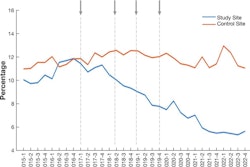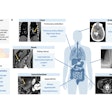Radiology practices in Wasteful and Inappropriate Service Reduction (WISeR) model-affected states should begin preparing now for documentation and workflow changes, according to the American College of Radiology (ACR).
The Centers for Medicare and Medicaid Services (CMS) will implement the model in six states -- Arizona, New Jersey, Ohio, Oklahoma, Texas, and Washington -- effective January 1, 2026. There will be no delay due to the federal government shutdown, the ACR noted in an October 29 bulletin.
WISeR will run for six performance years and use AI and machine learning to streamline the prior authorization review process for a narrow set of items and services under Medicare Part A and Part B that are thought to be vulnerable to fraud, waste, and abuse, according to CMS. The model is voluntary.
ACR highlighted five ways the demonstration will affect radiology providers:
- Prior authorization required for many services
- Technology-driven oversight
- Operational impact
- Appeals and exemptions
- Documentation requirements
The model excludes inpatient-only services, emergency services, and services that would pose a substantial risk to patients if delayed, CMS said. The aim is to drive toward autoapprovals of requests, according to CMS.
The ACR said several service categories selected for the WISeR model will affect interventional radiology practices, in particular.
However, "CMS will also explore Gold Carding in mid-2026 to exempt providers with a high rate of approved requests from pre-payment review," the ACR noted, suggesting providers check the WISeR Model Provider and Supplier Operational Guide, last updated October 10, 2025.
CMS also said it will audit participants to ensure that determinations are consistent with Medicare coverage criteria.
Read the ACR bulletin here.



















